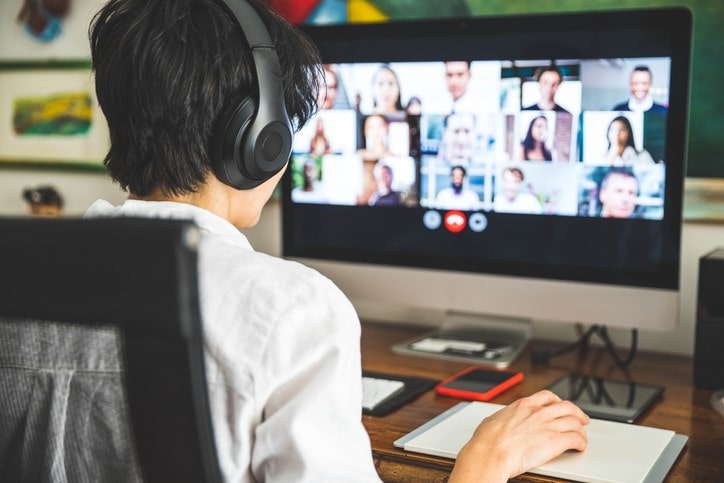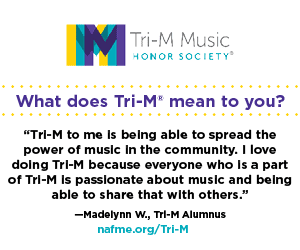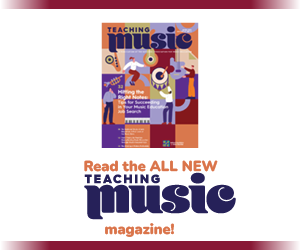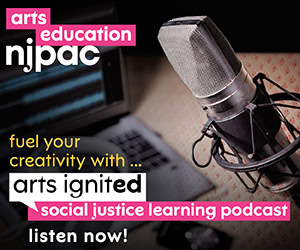/ News Posts / Finding Value in the Virtual Ensemble
Finding Value in the Virtual Ensemble
How Should We as Music Educators Consider Coming Changes?
By NAfME Member Joseph Owens
Coronavirus has forced music educators to deliver music instruction in an entirely different way. The emerging form of the “virtual ensemble” has sparked an interesting and valuable debate that is so critical in music education. This debate creates an important springboard for what music education looks like, should look like, could look like in the foreseeable future. How will our choices now impact our solidarity and strength as music educators as we grapple with the coming onslaught of restrictive guidelines about how schools should function in the face of restrictions relating to social distancing and school budget meltdowns?
The Bigger Picture
I’m afraid that if we don’t “zoom out” and try to understand the bigger picture of what the world is experiencing right now we might be missing opportunities. By no means am I suggesting that everyone put together a virtual ensemble; my suggestions here relate to our support and value of each other. I hope to lay out a bigger picture of how we should be thinking as music educators during this challenging time but will use the virtual ensemble as the example.
We music teachers talk about the things that we do in our classrooms that cannot be replicated anywhere else in the school building, and rightly so. In which other classrooms are students asked to work with precision, synchronicity, self-assessment, group-assessment, emotion, executive function, fine-motor, gross-motor, nuance, detail, reflection, and teamwork? Each of these skills (and more) can be observed at any given moment during engaging, active participation in performance music class. We are usually quite proud of our “we do everything” mindset.
Finding Value
Through the standards we are tasked with creating, performing, responding, and connecting.
Laying out the process of a virtual ensemble might be helpful to see how it is similar to a “real” ensemble, and certainly can meet learning standards.
- Selecting literature: Music educators work hard to program music that suits their students, taking into account their ability, and the content of the piece.
- Organizing a teaching method:
- Score study, what tools are we going to use to help students learn the music, anticipating struggle spots.
- Practice tracks and tutorial videos. In the same way an ensemble teacher may provide practice tracks to their concert selections making it easier for their students to practice at home, or the way a teacher provides reference recordings to students to help model what a representative tone may be.
- Small group video conferencing (progress check, assessment, motivation, instruction).
- Individual practice: Inspire students to take advantage of the tools you have provided. It’s likely that students will practice more on their own.
- Self-Evaluation: Asking students to enter “performance mode.” They will need to choose and submit their best work.
- Editing: As conductors of traditional ensembles, we generally ask students to do as we say (show) to unify, blend, balance, add precision. We make similar decisions and considerations in the virtual ensemble. How much pitch correct? How much timing correct? Whose voice should be pulled down, which part should be put up?
- Release: Share your performance with students, parents, community, and quite possibly a larger audience.
- Reflect: Digital platforms offer ways to hold meaningful discussions to make connections and provide reactions to the process and performance that students experienced.
The Context
We have all made choices in our educational preparation and pathways. Some instrumental teachers choose to work extra hard on their secondary instruments, as others argue that performance on the major instrument is more important. In these cases, and in many others we, as professionals, have spent years learning skills outside our initial interest in order to gain perspective, and develop tools with which to impart a meaningful music education. Some teachers have helped students engage in music by learning how to make virtual interactive classrooms, and still others have made the choice to learn audio and video editing software to help meet the goal of students performing together.
Varying preferences of teaching methods have always been a part of music education. A healthy debate of the “schools of thought” is valuable and necessary to help us develop a sense of what works for others. We have come a long way in the last 15 years as our national and local associations have supported the proliferation of “emerging ensembles,” and giving credence to various musics outside of the band/chorus/orchestra paradigm. While we all likely agree that live music is special, most of us have a recording of a favorite work that provides a way for us to experience that work in a way that is different, perhaps even more meaningful, and we would not simply toss all recordings aside as invaluable. At this time, we are presented with yet another opportunity to make a choice about how we respond to the emerging form of virtual ensembles. To say that this form is devoid of educational value is a failure to properly evaluate its qualities, or perhaps an evaluation of a failed execution.
As music teachers—and often we are one of very few, if not the only one, within a school building—should we not feel the incumbency of promoting music as a cultural binding agent? As educators we have the responsibility to meet our students where they are and bring them to the next level. As a “creative” group, we solve problems better than anyone expected them to be solved. These realizations for yourself are not enough. We must also realize that our colleague is also a music teacher who is evaluating these concepts and has other influencing factors and responds in a manner that works within their own contexts.
The Takeaway
We know that music connects us. We know that it is better together. We also know that coronavirus has made it terribly difficult to be connected and together. A virtual ensemble may or may not be a way for you to bring your students together and connect them through music, after all, it is not a perfect solution. Music teachers will continue to innovate new strategies to spread music. I think at this vital time in our world, we need to come together and not dismiss what others deem to be valuable in the name of promoting music education in their communities. It’s unlikely that anyone using the virtual ensemble as a tool for music-making with their students during this time believes that it is a full replacement for the music-making experiences that we are so accustomed to.
Remember that one day, this period of time will be a memory. We will get through this. Of course, we need to start thinking about what music education looks like on the other side of the pandemic. But we also need to remember that we are all hurting right now. What will be said of how music educators did their part to help make it a little better? Then, how did music education at large support the music educator who found a meaningful way to bring music to their community?
About the author:
Joseph Owens currently serves as the Supervisor of Fine and Performing Arts in the Mineola School District. In this position he oversees the implementation of curricular and extra-curricular programs in the areas of music, art, and drama for all students K–12. In addition, Joe is active in professional organizations, holding executive board positions in the Nassau Music Educators Association, and the Nassau County chapter of New York State Council of Administrators of Music Education. Before becoming an administrator, Joe held various music-teaching roles in the Mineola school district, including chorus, band, orchestra, theatre, AP Music Theory, AV/TV, and marching band. As a choral conductor and singer, he served as the Assistant Choral Director for the Long Island Philharmonic Chorus and the Long Island Masterworks Chorus. Joe has received a B.Mus. in Music Education from the Crane School of Music at SUNY Potsdam, a M.A. in Music Education from Teachers College, Columbia University, a M.A. in Educational Administration and Technology from Adelphi University, and is pursuing an Ed.D. from Teachers College, Columbia University. Follow him on Twitter at @owensjo.
currently serves as the Supervisor of Fine and Performing Arts in the Mineola School District. In this position he oversees the implementation of curricular and extra-curricular programs in the areas of music, art, and drama for all students K–12. In addition, Joe is active in professional organizations, holding executive board positions in the Nassau Music Educators Association, and the Nassau County chapter of New York State Council of Administrators of Music Education. Before becoming an administrator, Joe held various music-teaching roles in the Mineola school district, including chorus, band, orchestra, theatre, AP Music Theory, AV/TV, and marching band. As a choral conductor and singer, he served as the Assistant Choral Director for the Long Island Philharmonic Chorus and the Long Island Masterworks Chorus. Joe has received a B.Mus. in Music Education from the Crane School of Music at SUNY Potsdam, a M.A. in Music Education from Teachers College, Columbia University, a M.A. in Educational Administration and Technology from Adelphi University, and is pursuing an Ed.D. from Teachers College, Columbia University. Follow him on Twitter at @owensjo.
Did this blog spur new ideas for your music program? Share them on Amplify! Interested in reprinting this article? Please review the reprint guidelines.
The National Association for Music Education (NAfME) provides a number of forums for the sharing of information and opinion, including blogs and postings on our website, articles and columns in our magazines and journals, and postings to our Amplify member portal. Unless specifically noted, the views expressed in these media do not necessarily represent the policy or views of the Association, its officers, or its employees.
Catherina Hurlburt, Marketing Communications Manager. May 20, 2020. © National Association for Music Education (NAfME.org)
Published Date
May 20, 2020
Category
- Ensembles
- Technology
Copyright
May 20, 2020. © National Association for Music Education (NAfME.org)






